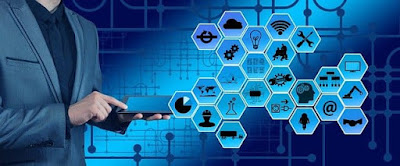What is IIoT?
Introduce
IIoT is an acronym for the Industrial Internet of Things, which refers to connected devices used in manufacturing, energy, and other industrial practices. IIoT benefits from increased efficiency by introducing more automation and self-monitoring to industrial machines.
How does IIoT relate to edge computing?
Often deployed IIoT devices in the context of edge computing .
Edge computing refers to the strategy of moving computing resources closer to the physical location of users or data sources. When computing services are processed closer to the end devices used by users, users can receive faster and more reliable services, and businesses can benefit from flexible hybrid cloud computing. Edge computing is one of the ways businesses can decentralize data computation and processing by using a common pool of resources across multiple locations.
It is common to use IIoT devices for edge computing. For example, in a factory environment, a machine that collects data to analyze real-time data from the field represents an IIoT use case that supports an edge computing strategy.
To achieve these benefits, you need an underlying platform that can integrate heterogeneous data systems. Especially since the existing manufacturing systems were isolated from each other.
In an integrated systems environment, manufacturing floors can deploy artificial intelligence and machine learning (AI/ML) model training through a scalable service platform.
The combination of IIoT and edge computing can help manufacturers solve problems faster by transforming operations, assisting end users in making business decisions, and dramatically improving plant productivity.
What is the difference between IIoT and IoT?
IoT or Internet of Things is a generic term for everyday things connected to a network and sending and receiving data to and from other devices. IIoT is a subcategory of IoT.
In general, IoT consists of all kinds of devices that use an internet connection to send and receive data, and the use of these devices for industrial purposes is the IIoT.
Consumer IoT devices include products such as connected home thermostats, lights, and door locks. Industrial IoT devices cover a wide range of items, from water meters to factory machinery to sensors in pipelines.
How does IIoT actually work?
There are many different use cases for IIoT solutions, and the two main industries using IIoT are manufacturing and energy.
In manufacturing, a common IIoT use case is to know the state of the plant. By analyzing sensor data generated by machinery in real time and inputting it back into the control system, operational and business efficiency levels can be increased.
Companies in the energy sector can use IIoT to enhance monitoring of field assets. IIoT devices can collect real-time data on grid performance, pipeline flow or emission monitoring, even from assets distributed over large geographic areas.
For example, a water and sewage utility in Italy collects real-time water quality data through connected self-service water supply facilities throughout a given area.
How does IIoT automation work?
IIoT and automation are closely related. Data collected by IIoT devices drives automated tasks that increase efficiency, such as predictive maintenance. You can also use automation tools to more efficiently manage large numbers of IIoT devices.
A factory machine, for example, can be programmed to respond to data sent by onboard sensors (eg notification of increased vibration) and perform an action automatically (eg notify the operator that maintenance is required). In this way, IIoT-based automation can minimize downtime and reduce overall maintenance costs.
Automation can also be helpful, especially if you need to manage a large number of IIoT devices that are distributed over a large geographic area. Just like managing servers and network devices, IIoT devices can be updated and verified with automation software.
What is Industry 4.0 and the 4th Industrial Revolution?
IIoT systems are often mentioned in discussions related to Industry 4.0 and the Fourth Industrial Revolution. These two terms are synonymous and refer to the growing trend of automation, communication, and self-monitoring in traditional manufacturing and industrial practices.
Wikipedia finds the origins of the phrases “Industry 4.0” and “4th Industrial Revolution” in strategic projects carried out on behalf of the German government in 2011 and 2013. The term “fourth industrial revolution” was made more popular by an article by economist Klaus Schwab (later published as a book).
The three previous industrial revolutions refer to the advent of mechanical manufacturing methods using the power of steam and water, the acceleration of industrial development using railways, telegraph and electricity, and the digital revolution with the advent of advanced computing technologies.
IIoT overlaps with many essential concepts of Industry 4.0. These include, for example, concepts such as interconnectivity, information transparency, technology that assists humans, and decentralized decision-making. Automation, AI/ML, machine-to-machine communication, and big data are also closely related to Industry 4.0 and can also be related to the IIoT ecosystem.
What is a digital twin?
A digital twin is a virtual replica of a system that exists in the real world, often used to monitor performance and diagnose problems. A digital twin is typically a model of a specific item, such as a generator, factory machinery, or spacecraft.
Connecting an IIoT device with a digital twin will allow you to check the health of the device and detect problems. This connectivity-focused IIoT and digital twin strategy enables drivers to monitor devices, optimize performance and reduce downtime.
What is a smart city?
The term “smart city” refers to the concept of managing urban areas using connected technologies and data analytics.
Smart cities collect data from devices such as sensors and cameras to support public services such as traffic congestion management, crime prevention, and property and facility maintenance.
Devices commonly used in smart cities, from traffic sensors to utility meters, are considered part of the IIoT. As with all IIoT use cases, the smart city concept relies on connectivity and real-time data collection and analytics.


Comments